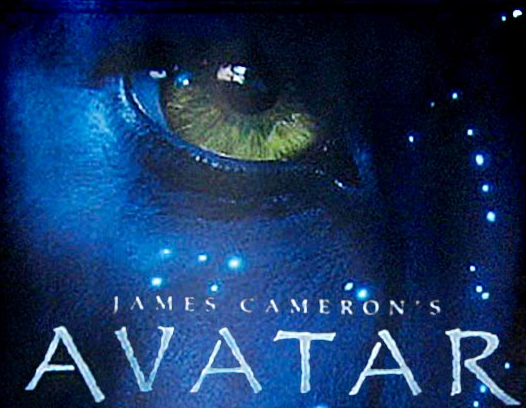
It is always fascinating to read critical analyses of popular films when the writer actually dislikes popular culture, which begs the question, why write about something you hate? [James Bowman writes for the journal, [The New Atlantis and his pieces are generally anti-technology and anti-pop culture. His recent article on Avatar follows the usual arguments of critics disconnected from the culture they seem bent on critiquing. Bowman describes Avatar as a flight of fantasy, dangerous because as with all fantasy films of this genre, it is both escapist and dangerously full of illusions not only about society but also about the future. Interestingly, he claims that the film doesn’t follow the Western tradition of mimesis, that is, it makes no claim to imitate reality and because of this, has no merit as art.
Bowman also says that the only difference between Avatar and other films of the same type is the use of 3D as if the medium of film and its transformation is not part of an important aesthetic shift as well as an important shift in how stories are told. Bowman even criticizes James Cameron’s development of a new language for the indigenous people of Pandora, the Na’vi whom Bowman describes as monkeys. Here is what he says: "The natives of Pandora are giant blue monkeys with sophisticated fiber optics in their tails and the natural world they inhabit is filled with floating mountains, huge dragon-birds whom the inhabitants ride like horses, hammer-headed hippos the size of houses, and other fantastical creatures too numerous to mention and impossible to exist on Earth." Of course, the ‘natives’ are constructions and of course they don’t exist. As with all artifice they are the products of Cameron’s rich imagination, but in Bowman’s world imagination is actually a dirty word.
But, enough about a bad review. To answer a question that must be creeping into your mind, why write about something I dislike? Avatar is an experiment in 3D, that is an experiment with images that have a rather wispy feel like the brilliant disappearing Cheshire cat in Tim Burton’s, Alice in Wonderland. 3D creates an intense feeling of pleasure in viewers largely because it is so ephemeral, not because it approximates reality. I have watched viewers try and grasp the images that come close to them. But, the closeness is itself a function of the glasses we are wearing, a function of the desire to be in the image, and to be a part of the experiences the images are generating.
Generating.
3D in its modern incarnation is about generative images, that is about depth, distance and a more profound sense of perspective. 3D continues the long tradition of exploring our rather human capacity and desire to enter into worlds entirely made of images. 3D extends the Renaissance exploration of line, shape and colour. That is why Avatar is so important. Sure, its story has been told many times, but crucially not in this way. The film is an exploration of a new frontier and aside from 3D, its real innovations lie in the use of motion capture technology to create not only a synthesis of the real and imaginary, but also synthetic worlds. Finally, we can be rid of the pretensions that all art must show in the most pedantic of ways some relationship to the real!! Painters rid themselves of this crisis when they explored entire canvases of one colour (Rothko), while filmmakers and film critics still think that a black screen goes against the essence of the cinema.
Of course, 3D is in its early days as a medium for exploring the power of storytelling. And, Cameron actually got much of his inspiration for Avatar from his underwater explorations of the wreck of the Titanic. Cameron is really interested in creating new languages for conventional ways of seeing and describing the world. He didn’t need to invent a new language for the Na’vi but he did. He didn’t have to shoot all those beautiful and magical scenes of Pandora, except that if you have ever swum off a reef, you would have noticed many of the same colours and shapes and why not recreate them if you can?
Bowman doesn’t talk about what the word avatar means. Yet, that is at the heart of the film. Avatars are about substitution, that is about substituting what is missing, be it a body or a mind or a story. Avatars don’t replace their progenitors. That is, unless you decide like Cameron did, that his main character had to be transformed from the two dimensional world of the screen into a Na’vi, through a death and rebirth ritual that actually happens to be at the heart of what nearly all major religions in the world proselytize about on an hourly basis.
Let me switch terminology for a moment and suggest that Avatar is actually a commentary on the illusions of religion and on the impossible dreams of immortality that have haunted humans since they began to paint on the walls of caves. Avatar is about that inner world, our inner world that we keep alive in order to stay alive. It is the reverse of the Platonic cave where those who are blind to reality need to be saved. Rather, the film explores those who have reconciled themselves to their fate and who have created a world that is a reflection of their weaknesses and strengths. In other words, the Na’vi are us when we dream and lest we forget, we spend a good proportion of our lives dreaming.
 Thursday, April 22, 2010 at 12:04PM
Thursday, April 22, 2010 at 12:04PM 



